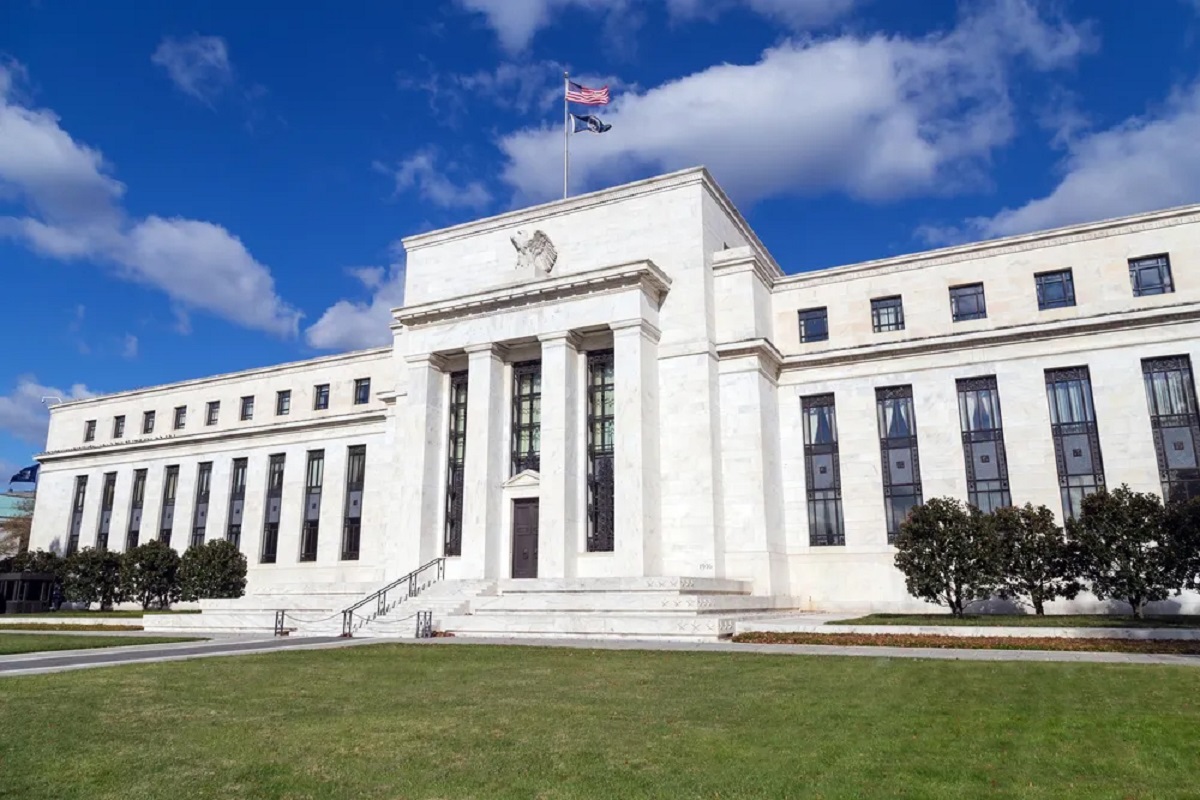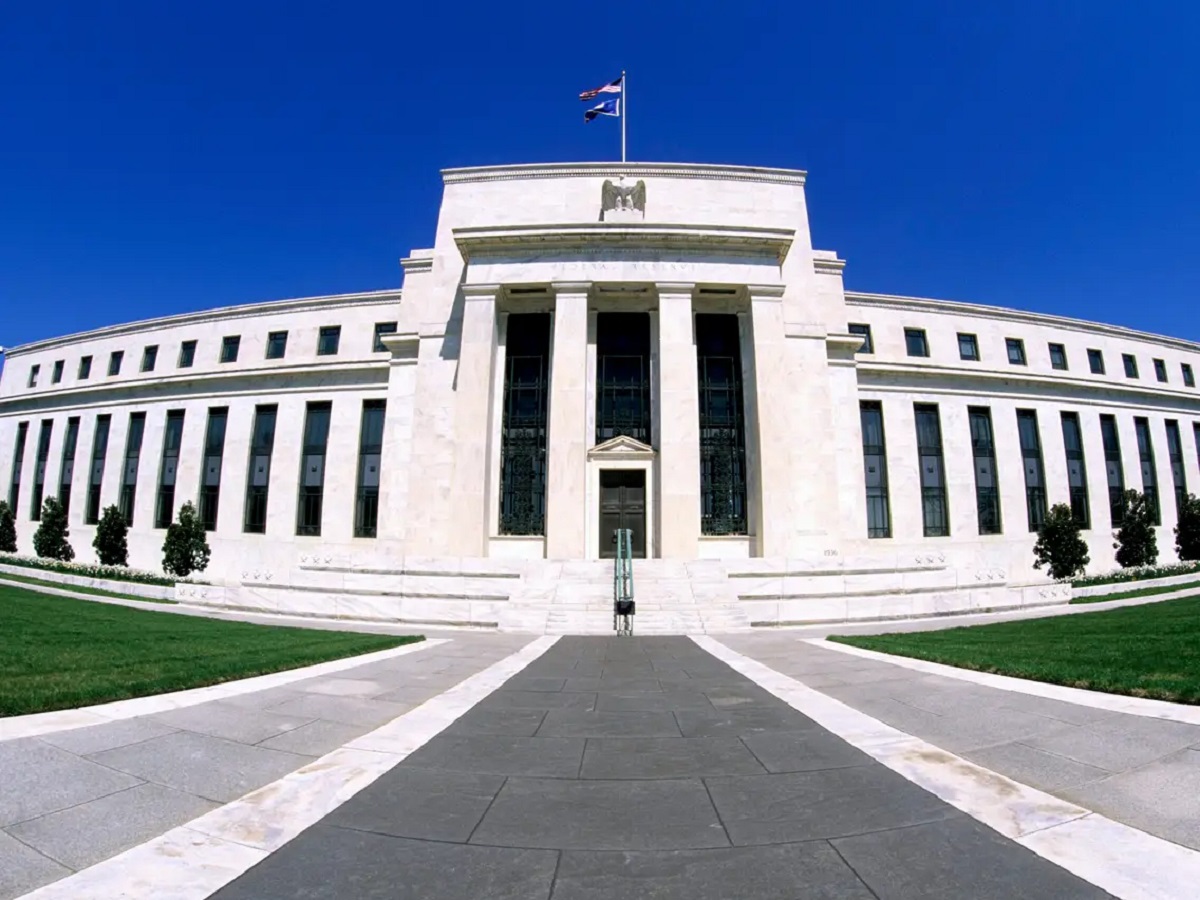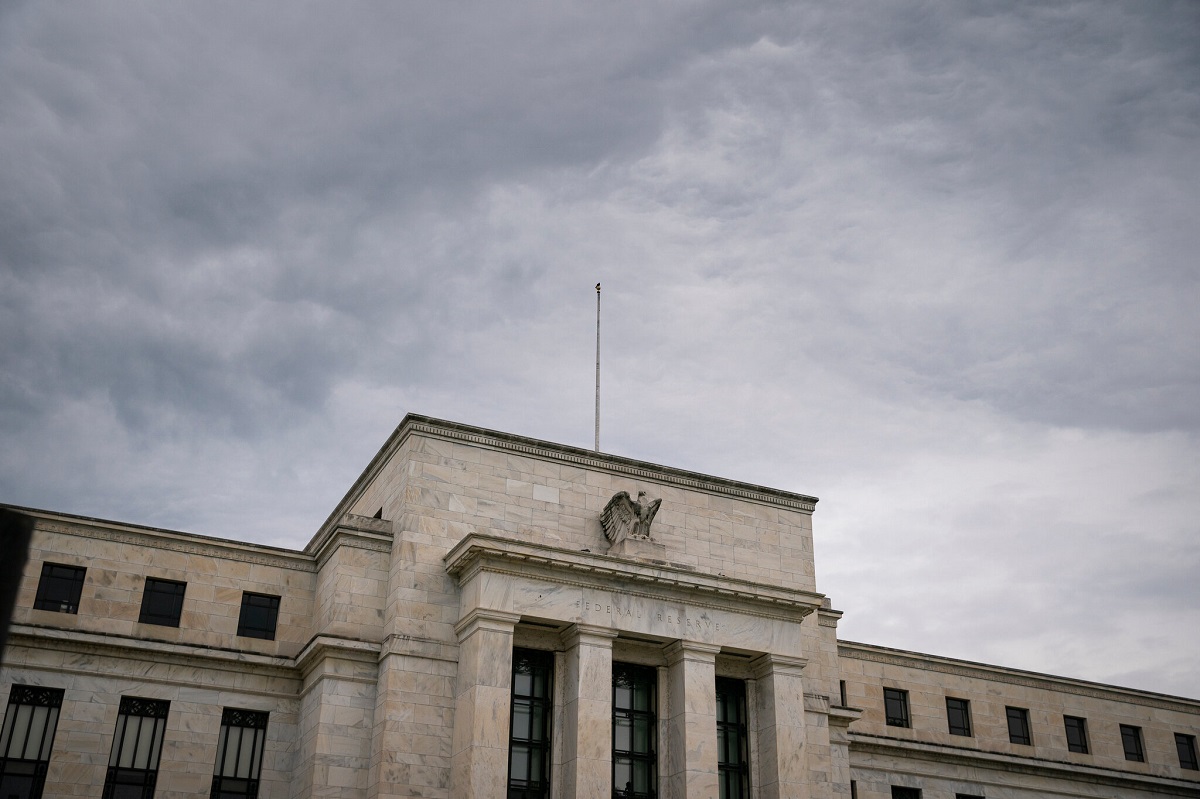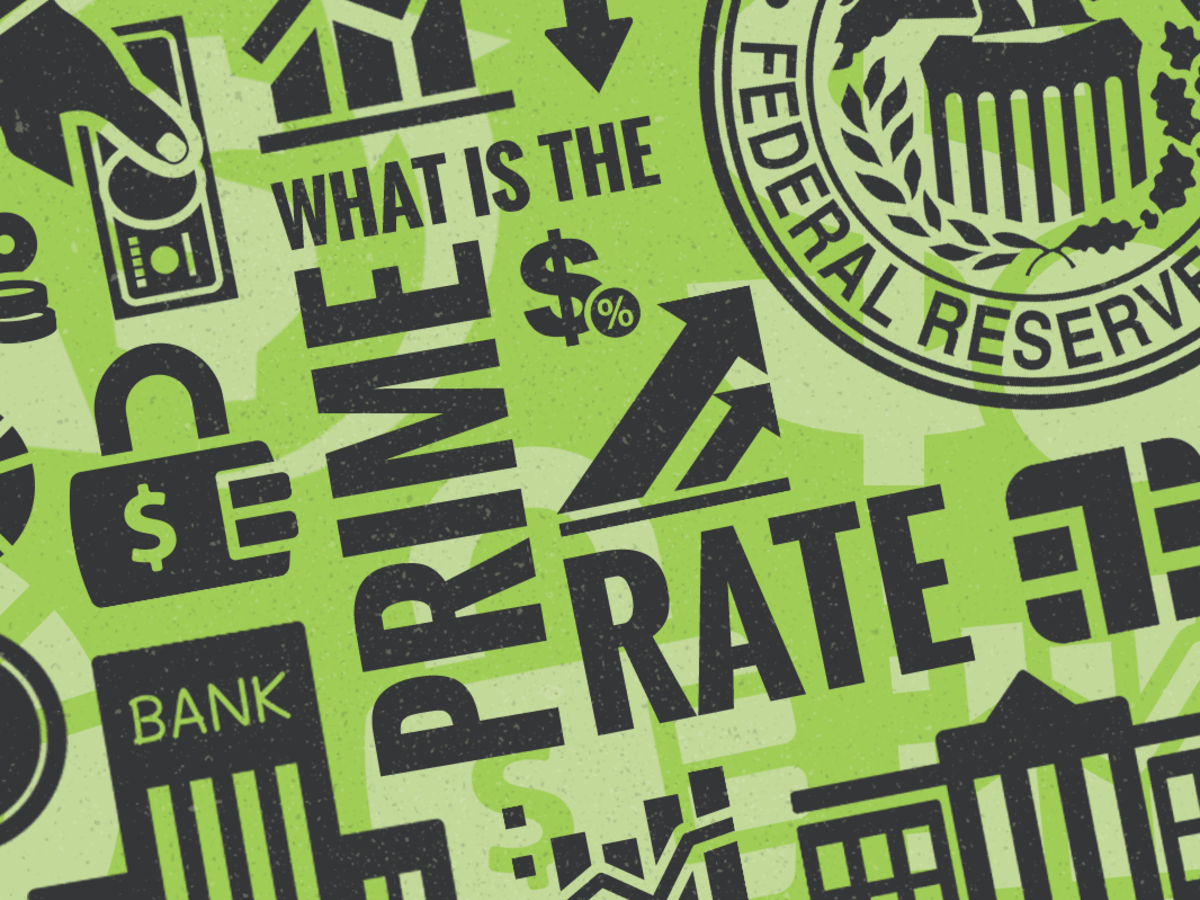Introduction
The interest rate that banks charge when lending money is a crucial factor in the overall economy. It affects everything from mortgage rates to business loans and consumer credit. But have you ever wondered who plays a pivotal role in influencing these interest rates? Look no further than the Federal Reserve.
The Federal Reserve, often referred to as the “Fed,” is the central banking system of the United States. It was established in 1913 and is responsible for regulating the country’s financial institutions and implementing monetary policies to maintain stability in the economy.
In this article, we will explore the ways in which the Federal Reserve influences the interest rates that banks charge when lending money. By understanding these mechanisms, we can gain valuable insights into how the overall economy is affected.
It is important to note that the Federal Reserve is an independent entity and operates separately from the government. However, it works in collaboration with policymakers to achieve specific economic goals, such as controlling inflation and promoting full employment.
With that said, let’s dive into the role of the Federal Reserve and how its actions shape the interest rates charged by banks when lending money.
What is the Federal Reserve?
The Federal Reserve, often referred to as the “Fed,” is the central banking system of the United States. It was established in 1913 with the passage of the Federal Reserve Act. The primary purpose of the Federal Reserve is to provide a stable and secure financial system that fosters economic growth and stability.
The Federal Reserve is composed of several key elements. The Board of Governors is the main governing body, consisting of seven members appointed by the President and confirmed by the Senate. The Chairman of the Board, chosen from among the members, serves as the public face of the Federal Reserve and leads its policy-setting meetings.
In addition to the Board of Governors, there are twelve regional Federal Reserve Banks located throughout the country. These banks serve as the operational arm of the Federal Reserve, providing banking services to commercial banks and implementing monetary policy decisions.
One of the primary functions of the Federal Reserve is to regulate and supervise financial institutions, such as banks and credit unions, to ensure the safety and soundness of the banking system. It sets various regulations and guidelines that these institutions must follow to maintain stability and protect consumers.
Another important role of the Federal Reserve is to conduct monetary policy. This involves managing the nation’s money supply and interest rates to achieve specific economic goals. By adjusting interest rates, the Federal Reserve influences the cost of borrowing money and controls inflation.
The Federal Reserve is also responsible for providing financial services to depository institutions, such as processing payments and maintaining the stability of the payment system. These services help facilitate smooth transactions and ensure the efficient functioning of the banking system.
Overall, the Federal Reserve plays a crucial role in maintaining the stability of the financial system and promoting economic growth. Its actions have a direct impact on interest rates, inflation, employment levels, and overall economic conditions.
The Role of the Federal Reserve
The Federal Reserve has several important roles in the U.S. economy. One of its primary responsibilities is to promote price stability and control inflation. The Federal Reserve uses monetary policy tools to influence interest rates, which in turn affects borrowing costs for businesses and consumers.
Another crucial role of the Federal Reserve is to foster a stable banking system. This involves supervising and regulating banks to ensure they operate in a safe and sound manner, and to protect consumers from unfair practices. The Federal Reserve sets guidelines for capital requirements, conducts regular stress tests, and oversees the overall health of the banking industry.
The Federal Reserve also acts as the lender of last resort. During times of financial crisis or liquidity shortages, banks may experience difficulties in obtaining funds. The Federal Reserve steps in by providing emergency liquidity through its discount window, which helps stabilize the banking system and prevents widespread disruptions.
Additionally, the Federal Reserve plays a role in overseeing the nation’s payment system. It ensures the smooth functioning of payment transactions, such as electronic transfers, checks, and automated clearinghouse transactions. This fosters confidence in the financial system and facilitates efficient business operations.
The Federal Reserve has a mandate to promote maximum employment as well. By maintaining stable economic conditions and controlling inflation, the Federal Reserve aims to support sustainable economic growth and employment opportunities. It closely monitors key economic indicators, such as unemployment rates and job growth, to make informed decisions regarding monetary policy.
Furthermore, the Federal Reserve serves as a repository for economic data and conducts research to better understand economic trends and developments. It plays a significant role in gathering and analyzing data on GDP, employment, inflation, and other economic indicators, which helps inform monetary policy decisions.
In summary, the Federal Reserve plays a critical role in the U.S. economy. It promotes price stability, fosters a stable banking system, serves as a lender of last resort, oversees the payment system, and aims to maximize employment. Through its various functions, the Federal Reserve contributes to maintaining a healthy and prosperous economy.
The Federal Reserve and Monetary Policy
Monetary policy refers to the actions taken by the Federal Reserve to manage the money supply and interest rates to achieve specific economic objectives. The Federal Reserve uses monetary policy tools to influence the overall state of the economy, control inflation, and promote stable economic growth.
The Federal Reserve sets monetary policy through the Federal Open Market Committee (FOMC), which consists of the members of the Board of Governors and presidents of the regional Federal Reserve Banks. The FOMC meets several times a year to assess economic conditions and make decisions regarding interest rates and other monetary policy measures.
One of the primary tools of monetary policy is open market operations. In open market operations, the Federal Reserve buys or sells government securities, such as Treasury bonds, in the open market. When the Federal Reserve buys these securities, it injects money into the banking system, increasing the money supply and lowering interest rates. Conversely, when the Federal Reserve sells securities, it reduces the money supply and raises interest rates.
Another tool utilized by the Federal Reserve is reserve requirements. Reserve requirements are the minimum amount of funds that banks must hold in reserve against their deposits. By adjusting these requirements, the Federal Reserve can influence the amount of money that banks can lend out. Lowering reserve requirements allows banks to lend more, which stimulates economic activity, whereas raising reserve requirements restricts lending, leading to slower growth.
The third tool of monetary policy is the discount rate. The discount rate is the interest rate at which banks can borrow funds directly from the Federal Reserve. By adjusting the discount rate, the Federal Reserve can encourage or discourage banks from borrowing, which ultimately affects the overall availability of credit in the economy.
The Federal Reserve also utilizes forward guidance as part of its monetary policy. Forward guidance involves providing public communications about the future course of monetary policy, such as the anticipated direction of interest rates or the timeframe for potential changes. This helps shape market expectations and influences borrowing costs, investment decisions, and consumer spending.
By employing these monetary policy tools, the Federal Reserve aims to maintain price stability, promote sustainable economic growth, and support maximum employment. The ultimate goal is to create an environment conducive to a well-functioning economy, where businesses can thrive and consumers can make confident financial decisions.
How the Federal Reserve Influences Interest Rates
The Federal Reserve plays a crucial role in influencing interest rates in the economy. By adjusting its monetary policy tools, the Federal Reserve can directly impact the cost of borrowing money and, consequently, the interest rates that banks charge when lending to businesses and consumers.
One of the primary ways the Federal Reserve influences interest rates is through open market operations. By buying or selling government securities in the open market, the Federal Reserve affects the money supply in the banking system. When the Federal Reserve buys these securities, it injects money into the system, increasing the supply of available funds. This increase in funds leads to a decrease in interest rates, making borrowing more affordable for businesses and consumers.
Conversely, when the Federal Reserve sells securities in open market operations, it reduces the money supply, causing interest rates to rise. This tightening of funds makes borrowing more expensive, which can act as a curb on excessive borrowing and inflation.
Another way the Federal Reserve influences interest rates is through reserve requirements. When the Federal Reserve lowers reserve requirements, it allows banks to lend out a larger portion of their deposits. This increase in lending capacity leads to lower interest rates, as banks compete to attract borrowers with more favorable borrowing terms. Conversely, when the Federal Reserve raises reserve requirements, it restricts banks’ lending capacity, leading to higher interest rates.
The Federal Reserve also influences interest rates through the discount rate. The discount rate is the interest rate at which banks can borrow directly from the Federal Reserve. By adjusting the discount rate, the Federal Reserve encourages or discourages banks from borrowing. When the Federal Reserve lowers the discount rate, it becomes cheaper for banks to borrow funds, which can lead to lower interest rates in the broader economy. Conversely, when the Federal Reserve raises the discount rate, it becomes more expensive for banks to borrow, which can increase interest rates.
Forward guidance is another tool used by the Federal Reserve to influence interest rates. By providing public communication about the future direction of monetary policy, the Federal Reserve shapes market expectations. If the Federal Reserve signals that it intends to keep interest rates low for a considerable period, it can result in lower borrowing costs as market participants anticipate prolonged economic stimulus.
Overall, the Federal Reserve exerts significant influence over interest rates through its monetary policy tools. By adjusting the money supply, reserve requirements, the discount rate, and providing forward guidance, the Federal Reserve can effectively impact the cost of borrowing money and shape the interest rates that banks charge when lending to businesses and consumers.
Open Market Operations
Open market operations are a key tool used by the Federal Reserve to influence the money supply and interest rates in the economy. This monetary policy tool involves the buying and selling of government securities, primarily Treasury bonds, in the open market.
When the Federal Reserve wants to increase the money supply and lower interest rates, it conducts open market purchases. In this process, the Federal Reserve buys government securities from banks and other financial institutions, injecting funds into the banking system. The banks that sell these securities to the Federal Reserve receive payment in the form of newly created reserves, which increases their available funds for lending. As a result, the increased money supply leads to lower interest rates, making it more attractive for businesses and consumers to borrow.
Conversely, if the Federal Reserve wants to decrease the money supply and raise interest rates, it conducts open market sales. It sells government securities to banks and financial institutions, absorbing funds from the banking system. The banks that purchase these securities from the Federal Reserve must pay with their reserves. As a result, the money supply decreases, leading to higher interest rates. The higher borrowing costs act as a mechanism to restrain excessive borrowing and help prevent inflationary pressures in the economy.
The effectiveness of open market operations lies in their ability to influence the federal funds rate. The federal funds rate refers to the interest rate at which banks lend and borrow funds from each other overnight to meet their reserve requirements. It serves as a benchmark for many other interest rates in the financial system.
When the Federal Reserve conducts open market purchases, it injects reserves into the banking system, increasing the supply of available funds. As a consequence, banks have excess reserves, which they can lend to other banks in need. Increased lending between banks pushes down the federal funds rate, making borrowing cheaper. This, in turn, influences other interest rates, such as mortgage rates, auto loan rates, and credit card rates.
On the other hand, when the Federal Reserve conducts open market sales, it absorbs reserves from the banking system, reducing the supply of available funds. Banks with insufficient reserves must borrow from other banks, boosting demand for these funds in the federal funds market. The increased competition for funds pushes up the federal funds rate, making borrowing more expensive. This, in turn, influences other interest rates in the economy.
Open market operations provide the Federal Reserve with flexibility and precision in adjusting the money supply and interest rates. By buying or selling government securities, the Federal Reserve can effectively influence the availability of funds in the banking system, which has a direct impact on interest rates and borrowing costs throughout the economy.
Reserve Requirements
Reserve requirements are regulations set by the Federal Reserve that determine the minimum amount of reserves that banks must hold against their deposits. These reserves are held in the form of vault cash or deposits at the Federal Reserve.
The primary purpose of reserve requirements is to ensure the stability and soundness of the banking system. By mandating that banks hold a certain percentage of their deposits in reserve, reserve requirements act as a safeguard against bank runs and provide a buffer against potential liquidity shortages.
Reserve requirements also serve as a tool for the Federal Reserve to control the money supply and influence interest rates. When the Federal Reserve lowers reserve requirements, it reduces the amount of reserves that banks are required to hold. This allows banks to lend out a larger portion of their deposits, increasing the availability of funds for borrowing. The increased lending capacity leads to lower interest rates as banks compete to attract borrowers with more favorable borrowing terms.
Conversely, when the Federal Reserve raises reserve requirements, it mandates that banks hold a higher percentage of their deposits in reserve. This reduces the lending capacity of banks, as a larger portion of their deposits must be set aside as reserves. The decrease in lending capacity reduces the supply of available funds, leading to higher interest rates as banks seek to maintain profitability.
The Federal Reserve adjusts reserve requirements strategically to achieve its monetary policy objectives. Lowering reserve requirements stimulates economic activity by encouraging lending and making borrowing more affordable. This can be beneficial during periods of economic slowdown or recession when the central bank wants to spur growth.
On the other hand, raising reserve requirements acts as a mechanism to tighten credit availability and prevent excessive lending that may contribute to inflationary pressures in the economy. By restricting lending capacity, the Federal Reserve can help cool down an overheating economy and curb inflationary tendencies.
It’s important to note that changes in reserve requirements are relatively infrequent and are usually made with ample notice to allow banks to adjust their operations accordingly. This provides stability and predictability to the banking sector and allows financial institutions to plan and manage their reserve holdings effectively.
Overall, reserve requirements are a powerful tool utilized by the Federal Reserve to maintain the stability of the banking system and influence interest rates. By adjusting these requirements, the Federal Reserve can regulate the lending capacity of banks, thereby influencing the availability and cost of funds for borrowing in the economy.
Discount Rate
The discount rate is the interest rate at which depository institutions, such as banks, can borrow funds directly from the Federal Reserve. It is one of the tools used by the Federal Reserve to regulate the availability of credit and influence interest rates in the broader economy.
The discount rate plays a crucial role in the Federal Reserve’s monetary policy. By adjusting the discount rate, the Federal Reserve influences the cost of borrowing funds for banks. When the discount rate is lowered, it becomes cheaper for banks to borrow funds from the Federal Reserve. This encourages banks to borrow more, increasing the availability of credit in the economy and potentially lowering interest rates.
On the other hand, when the Federal Reserve raises the discount rate, it becomes more expensive for banks to borrow funds. As a result, banks may be less inclined to borrow, reducing the availability of credit and potentially raising interest rates. The higher borrowing costs act as a mechanism to restrain excessive borrowing and help prevent inflationary pressures in the economy.
The discount rate serves as a safety net for depository institutions. It provides a source of emergency liquidity during times of financial stress or liquidity shortages. If a bank is unable to secure funds from other banks or the private market, it can turn to the Federal Reserve for short-term loans through the discount window.
It’s important to note that the discount rate is typically set above the target federal funds rate. The federal funds rate refers to the interest rate at which banks lend to and borrow from each other overnight to meet their reserve requirements. The discount rate acts as a penalty or cost for banks that choose to borrow directly from the Federal Reserve rather than borrowing from other banks in the federal funds market.
The use of the discount rate by banks is generally seen as a signal of financial distress or unusual circumstances, as borrowing from the discount window can carry a stigma. Banks are expected to rely on the discount window as a last resort and maintain their liquidity and access to other sources of funding.
The Federal Reserve adjusts the discount rate based on economic conditions and its monetary policy objectives. However, changes in the discount rate are relatively infrequent and are usually made in conjunction with other policy measures to ensure a balanced and coordinated approach to monetary policy.
Overall, the discount rate serves as an important tool for the Federal Reserve to influence interest rates and regulate credit availability. By adjusting this rate, the Federal Reserve can incentivize or disincentivize borrowing, thereby impacting the overall cost and availability of credit in the economy.
The Impact on Banks and Lending
The actions taken by the Federal Reserve, including its monetary policy decisions and adjustments to interest rates, have a significant impact on banks and lending activities. These effects can be observed in various aspects of the banking industry and the availability of credit in the economy.
One direct impact of the Federal Reserve’s actions is on the profitability of banks. When the Federal Reserve lowers interest rates or implements policies to stimulate borrowing, banks may experience lower net interest margins. Net interest margin is the difference between the interest earned on loans and investments and the interest paid to depositors and other funding sources. With lower interest rates, banks may have to accept narrower spreads, reducing their profitability.
However, lower interest rates can also fuel increased demand for loans as borrowing becomes more affordable for businesses and consumers. This can lead to an increase in lending activities for banks. Increased lending can be particularly advantageous for banks’ long-term growth and revenue generation.
The availability of credit is another aspect affected by the actions of the Federal Reserve. When the Federal Reserve implements policies to stimulate borrowing, such as lowering interest rates or reducing reserve requirements, banks may be more inclined to lend money. This increases the availability of credit, making it easier for businesses and individuals to access loans for various purposes.
Conversely, when the Federal Reserve tightens monetary policy by raising interest rates or increasing reserve requirements, banks may become more cautious about lending. Higher borrowing costs and reduced lending capacity can limit the availability of credit, making it more difficult for businesses and individuals to access loans, which can have a dampening effect on economic growth.
Furthermore, the Federal Reserve’s actions can also influence the risk appetite of banks. Lower interest rates can create an environment of low-cost lending, which may encourage banks to take on additional risks in search of higher returns. This can lead to increased lending to borrowers with lower creditworthiness or relaxed underwriting standards. Conversely, when the Federal Reserve tightens monetary policy, banks may become more risk-averse, tightening lending standards and reducing the availability of credit to higher-risk borrowers.
The impact of the Federal Reserve’s actions on banks and lending extends beyond individual institutions. The availability and cost of credit influence investment decisions, business expansions, and consumer spending. By adjusting interest rates and implementing monetary policy measures, the Federal Reserve can shape economic conditions and influence overall borrowing levels, impacting the growth and stability of the broader economy.
In summary, the actions and decisions of the Federal Reserve have a significant impact on banks and the availability of credit in the economy. By influencing interest rates and implementing monetary policy measures, the Federal Reserve affects the profitability of banks, the availability of credit, and the risk appetite of lenders. These effects have wide-ranging implications for businesses, consumers, and the overall health of the economy.
Conclusion
The Federal Reserve plays a crucial role in influencing the interest rates charged by banks when lending money. Through its various monetary policy tools, such as open market operations, reserve requirements, and the discount rate, the Federal Reserve can directly impact the cost of borrowing and the availability of credit in the economy.
By adjusting interest rates, the Federal Reserve can stimulate economic activity during periods of slowdown or recession, promote price stability, and support sustainable economic growth. Lower interest rates make borrowing more affordable, encouraging businesses and consumers to take on loans for investments, expansions, and purchases.
In contrast, when the Federal Reserve raises interest rates or implements policies to tighten credit availability, it can help curb excessive borrowing and prevent inflationary pressures. Higher interest rates make borrowing more expensive, which may slow down lending and dampen economic growth.
The Federal Reserve’s actions also have a significant impact on banks and the banking industry. Adjustments to interest rates and monetary policy measures affect banks’ profitability, the availability of credit, and the risk appetite of lenders. Banks must navigate the balance between managing their profitability and fulfilling their role as providers of credit to businesses and consumers.
Overall, the Federal Reserve plays a critical role in maintaining stability in the financial system and influencing the cost of borrowing. By utilizing its monetary policy tools strategically, the Federal Reserve can shape economic conditions, guide interest rates, and foster an environment conducive to sustainable economic growth.

























